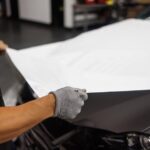When you decide to start a t-shirt business, one of the most important decisions you’ll face is choosing the best printing method for your designs. The printing method you select can affect everything from the quality of your prints to your production costs and the overall success of your business. With so many options available, it can be overwhelming to determine the best approach. In this post, we’ll walk you through the different t-shirt printing methods, what factors you should consider when making your decision, and how to choose the right one for your business.
Understanding Popular T-Shirt Printing Methods
Before diving into the decision-making process, it’s essential to understand the primary printing methods available. The most common techniques include screen printing, direct-to-garment (DTG) printing, heat press printing, sublimation, and vinyl cutting. Each of these methods has its strengths and limitations, which makes them suited for different types of orders and designs.
Screen printing is often the go-to method for high-volume orders, especially when the design is relatively simple. DTG printing, on the other hand, is ideal for intricate, multi-colored designs or smaller batch runs. Heat press printing is cost-effective for one-off custom designs, while sublimation is perfect for creating vibrant prints on polyester fabrics. Vinyl cutting is a great choice for simpler designs, like logos or lettering. Knowing these methods and their capabilities is the first step toward selecting the right one for your t-shirt business.
Factors to Consider When Choosing a Printing Method
Choosing the best printing method isn’t just about the type of design you want to create. Several factors will influence your decision, including the volume of your orders, the complexity of your designs, the fabric you’re using, the durability of the print, and your budget. Here’s a breakdown of each factor:
Volume of Orders
One of the most significant factors in deciding on a printing method is how many t-shirts you plan to print. If you’re running a small business with low-volume orders, methods like DTG or heat press printing might be more suitable. These techniques require little upfront investment and can be perfect for printing small batches or even one-off designs.
On the other hand, if you plan to handle high volumes of orders, screen printing might be your best option. Although screen printing requires a higher initial setup cost, it becomes more cost-effective as your order quantities increase. It’s ideal for large runs of t-shirts with simple designs.
Design Complexity
Your design plays a crucial role in determining the best printing method. If your design is simple, like a logo or a single-color graphic, screen printing or vinyl cutting may be the way to go. These methods can efficiently produce sharp, clean prints with minimal detail.
For more complex, multi-colored designs, DTG printing is likely your best option. DTG allows for full-color prints and intricate designs without the need for screens or stencils. This flexibility makes it ideal for small runs or custom prints with lots of detail. However, it’s important to note that DTG prints tend to cost more per unit, so it might not be the most economical choice for large orders.
Fabric Compatibility
The type of fabric you choose for your t-shirts is another critical factor. Some printing methods work better on certain materials. For example, screen printing works best on cotton fabrics, while sublimation is most effective on polyester. Sublimation involves turning ink into gas, which bonds with polyester fibers, creating vibrant, durable prints.
If you’re using a fabric blend, it’s essential to ensure the printing method you choose is compatible with that material. DTG, for example, can print on a variety of fabric types, but the quality may vary depending on the fabric’s composition. Heat press printing can also be used on almost any fabric, but it’s particularly well-suited for cotton and polyester blends.
Print Durability
Durability is a key consideration, especially if you’re producing t-shirts for resale. Customers expect prints that won’t fade or crack after a few washes. Screen printing is known for producing long-lasting prints, especially when high-quality inks are used. However, it’s crucial to make sure your t-shirts are properly cured to ensure the prints stay vibrant over time.
DTG prints, while detailed and high-quality, may not be as durable as screen prints. The ink used in DTG printing sits on top of the fabric rather than bonding with it, which can lead to fading after multiple washes. Heat press prints can also fade or peel over time, especially if not applied correctly. Sublimation prints, however, are incredibly durable, as the ink becomes part of the fabric itself.
Cost Considerations
Cost is always a concern when running a business, so it’s essential to factor in both startup and ongoing costs when selecting a printing method. Screen printing requires a significant initial investment for equipment and setup, but the per-shirt cost decreases as you produce more shirts. This makes it a cost-effective option for large orders.
DTG printing has lower setup costs, but the price per print can be relatively high, particularly for small orders. Heat press printing has low startup costs, but it can also become expensive if you need to print a large quantity of shirts. Vinyl cutting is also affordable for small runs but may not be the best option for larger orders due to its time-consuming process.
Comparing T-Shirt Printing Methods
To help you choose the best printing method for your business, let’s look at a detailed comparison of the most popular options.
Screen Printing
- Pros: Ideal for high-volume orders, long-lasting prints, vibrant colors.
- Cons: High setup costs, not suitable for detailed or multi-colored designs.
- Best For: Large batches of simple designs, bulk orders.
Direct-to-Garment (DTG) Printing
- Pros: Perfect for detailed, full-color designs, no setup fees, quick turnaround for small batches.
- Cons: High cost per unit for large orders, limited fabric compatibility.
- Best For: Small runs, custom designs with intricate details.
Heat Press Printing
- Pros: Low startup costs, easy to use, works on a variety of fabrics.
- Cons: Can result in less durable prints, not ideal for large quantities.
- Best For: One-off or small batch custom prints.
Sublimation Printing
- Pros: Vibrant, full-color prints, durable, great for polyester fabrics.
- Cons: Limited to light-colored polyester fabrics, not suitable for cotton.
- Best For: High-quality prints on polyester fabrics.
Vinyl Cutting
- Pros: Affordable for small batches, great for simple designs, durable prints.
- Cons: Not suitable for complex designs, time-consuming for large orders.
- Best For: Simple designs, logos, and text-based prints.
Choosing the Right Method for Your T-Shirt Business
Now that you understand the strengths and weaknesses of each method, it’s time to decide which is best for your t-shirt business. If you plan on selling high-volume, low-complexity designs, screen printing might be your best choice. If your designs are detailed and require full-color prints, DTG printing is a great option, especially for small runs. For custom, one-off designs, heat press printing and vinyl cutting can offer flexibility and low upfront costs.
If you’re looking for quality prints with excellent durability, sublimation might be the right choice, but only if you’re working with polyester fabrics. Ultimately, your decision will depend on your order volume, budget, and the complexity of your designs.
For a reliable source of printing equipment and supplies, check out AAPrintSupplyCo, which offers a variety of printing solutions to meet the needs of your t-shirt business.
Conclusion
Choosing the best printing method for your t-shirt business requires careful consideration of your design needs, budget, and long-term goals. Each printing method has its advantages, but the key is to choose the one that aligns with your specific business model. By understanding the various printing techniques and their limitations, you can make an informed decision that will help you create high-quality, profitable products.








